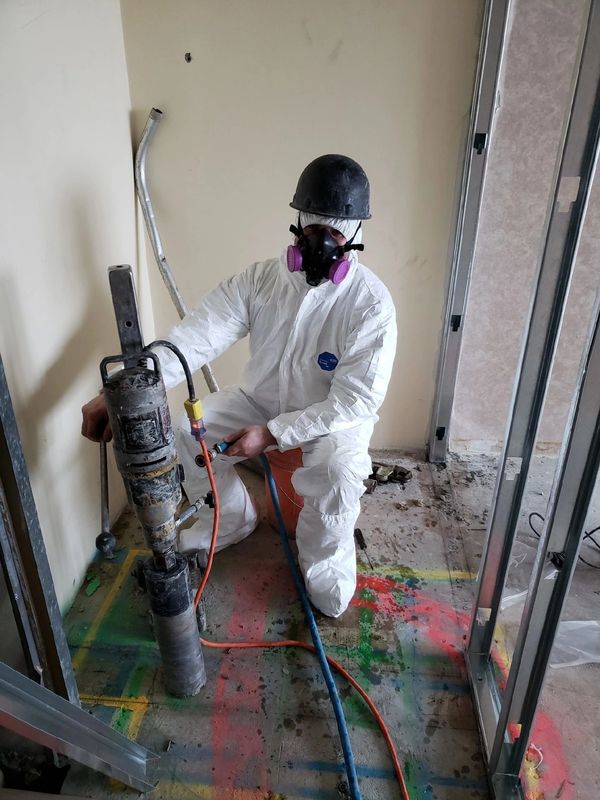Make The Most Of Building Safety with RainierGPR Concrete Scanning Services
Make The Most Of Building Safety with RainierGPR Concrete Scanning Services
Blog Article
Discovering the Key Benefits of Concrete Scanning in Construction Projects
In the realm of modern building practices, the use of concrete scanning technology has become a critical tool for making sure task effectiveness and architectural integrity. From improving precaution to properly detecting utilities hidden underneath the surface, the advantages of concrete scanning are diverse. The ability to improve job timelines and decrease costs while preserving existing structures is a testament to the value this modern technology offers the construction market. As we explore the nuanced advantages of concrete scanning, it becomes apparent that its influence expands far past surface-level evaluations, providing a look into the intricate internet of advantages waiting to be revealed.
Improved Safety And Security Procedures
Using advanced concrete scanning technology enhances precaution on building sites by supplying accurate detection of possible dangers hidden below the surface. This modern technology allows building and construction teams to identify rebar, channels, post-tension cords, and other blockages prior to excavation or exploration, considerably minimizing the risk of accidents. By identifying these elements specifically, workers can prevent destructive important structural parts, therefore stopping injuries, hold-ups, and expensive fixings.
In addition, concrete scanning plays a crucial function in guaranteeing the honesty of existing structures during restorations or expansions. By spotting weaknesses, gaps, or degeneration within concrete components, designers can deal with these concerns proactively, improving the total safety and security and long life of the building. This aggressive method not just alleviates the danger of architectural failings however additionally minimizes the potential for mishaps brought on by unforeseen architectural deficiencies.
Fundamentally, the application of concrete scanning innovation functions as a positive precaution that safeguards both building and construction employees and the structural honesty of buildings, eventually adding to the general success and performance of building tasks. - RainierGPR Concrete Scanning
Accurate Detection of Utilities
Concrete scanning innovation assists in precise identification of underground energies, boosting building site safety and performance. Exact discovery of energies is important in construction projects to protect against costly problems, project hold-ups, and most importantly, guarantee the safety of employees and the general public. By utilizing sophisticated scanning modern technologies such as ground-penetrating radar (GPR) and electro-magnetic induction, building and construction teams can map out the location of hidden pipes, wires, and other utilities with high levels of precision.

Time and Expense Efficiency

Concrete scanning technology makes it possible for construction groups to properly find rebar, post-tension cords, and other ingrained items within concrete structures. This exact information aids in staying clear of expensive errors such as unintentional damages to critical aspects during drilling, cutting, or coring activities. In addition, by determining prospective hazards ahead of time, the requirement for expensive repair services or remodel because of problems can be reduced, causing cost savings for the project.

Additionally, the ability to quickly and precisely spot energies underneath the surface without creating any damage not just conserves time yet likewise stops pricey interruptions to existing infrastructure. Generally, the moment and expense effectiveness benefits of concrete scanning make it an invaluable device for enhancing building project management and implementation.
Conservation of Structural Stability
Preserving the structural honesty of buildings and framework is extremely important in making sure lasting security and safety. Concrete scanning plays a crucial function in this conservation procedure by permitting construction professionals to recognize possible risks to the architectural honesty of a building or facilities prior to they intensify right into major concerns. With the usage of advanced scanning technologies such as ground-penetrating radar (GPR) and electro-magnetic induction, building groups can non-invasively assess the condition of concrete structures, locate rebar, post-tension cords, and other embedded components, and identify any type directory of voids, splits, or deterioration within the concrete.
Improved Project Preparation
In order to guarantee the successful execution of building jobs, precise interest to information and comprehensive preparation are essential parts that stem from a thorough understanding of the architectural problems determined through concrete scanning. Eventually, integrating concrete scanning into the job planning phase improves coordination amongst group members, promotes positive analytic, and contributes to the effective distribution of building jobs within spending plan and schedule constraints.
Verdict
In final thought, concrete scanning provides many click to investigate advantages in building and construction tasks. By enhancing precaution, precisely spotting utilities, improving time and cost efficiency, preserving architectural honesty, and helping in project planning, concrete scanning verifies to be a necessary tool for successful job implementation. Its capacity to alleviate dangers, boost effectiveness, and make sure project honesty makes it a vital asset for construction experts.
In the realm of modern-day construction methods, the use of concrete scanning modern technology has arised as a critical tool for guaranteeing task efficiency and architectural honesty.Concrete scanning modern technology allows building and construction groups to properly find rebar, post-tension cords, and various other embedded objects within concrete structures. Through the use of innovative scanning technologies such as ground-penetrating radar (GPR) and electro-magnetic induction, construction teams can non-invasively assess the problem of concrete frameworks, situate rebar, post-tension cords, and other embedded aspects, and identify any kind of spaces, cracks, or damage within the concrete.
In order to ensure the effective execution of building and construction tasks, meticulous interest to information and detailed preparation are vital components that stem from a comprehensive understanding of the architectural conditions recognized with concrete scanning. Eventually, incorporating concrete scanning into the task planning phase improves control among group members, promotes proactive problem-solving, and adds to the effective distribution of building and construction projects within budget and routine restrictions.
Report this page